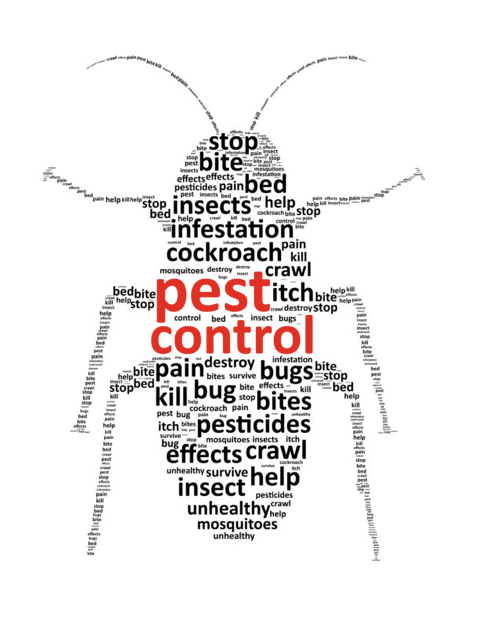Everything about Eco Bed Bug Exterminators Dc
Getting My Eco Bed Bug Exterminators Dc To Work
Table of ContentsTop Guidelines Of Eco Bed Bug Exterminators DcSome Known Details About Eco Bed Bug Exterminators Dc See This Report about Eco Bed Bug Exterminators DcThe 3-Minute Rule for Eco Bed Bug Exterminators DcEco Bed Bug Exterminators Dc Fundamentals Explained
Since chemicals are poisonous, they are also possibly hazardous to humans, animals, various other organisms, and the environment. Therefore, people who use chemicals or routinely come in contact with them must understand the relative poisoning, prospective health and wellness impacts, and preventative steps to minimize exposure to the items they utilize. Danger, or risk, of making use of chemicals is the potential for injury, or the level of risk involved in using a chemical under a provided collection of problems.
However, applicators can reduce or nearly remove direct exposure-- and therefore decrease hazard-- by adhering to the tag instructions, using individual safety garments and tools (PPE), and handling the chemical appropriately. For instance, more than 95 percent of all chemical direct exposures originate from facial exposure, primarily to the hands and lower arms. By wearing a set of unlined, chemical-resistant handwear covers, this kind of direct exposure can be nearly eliminated.
The unsafe impacts that occur from a single direct exposure by any path of access are termed "severe impacts." The 4 routes of exposure are dermal (skin), inhalation (lungs), oral (mouth), and the eyes. Acute toxicity is determined by checking out the facial poisoning, inhalation poisoning, and dental poisoning of test pets.
The Only Guide for Eco Bed Bug Exterminators Dc
Intense toxicity is measured as the amount or concentration of a toxicant-- the a.i.-- required to kill half of the pets in an examination populace. This step is generally shared as the LD50 (deadly dosage 50) or the LC50 (deadly concentration 50). Furthermore, the LD50 and LC50 values are based on a solitary dose and are taped in milligrams of chemical per kilo of body weight (mg/kg) of the guinea pig or in components per million (ppm).
The reduced the LD50 or LC50 worth of a chemical item, the higher its toxicity to humans and animals. Chemicals with a high LD50 are the least toxic to people if used according to the directions on the item label. The persistent poisoning of a pesticide is determined by subjecting test pets to long-lasting exposure to the energetic ingredient.
The persistent poisoning of a pesticide is more tough than acute poisoning to determine via research laboratory analysis. Products are categorized on the basis of their loved one severe toxicity (their LD50 or LC50 worths). Pesticides that are classified as very poisonous (Toxicity Category I) on the basis of either dental, facial, or breathing toxicity must have the signal words DANGER and POISON published in red with a head and crossbones symbol plainly showed on the front panel of the plan label.
The severe (single dose) dental LD50 for chemical products in this group varies from a trace total up to 50 mg/kg. For example, direct exposure of a few decreases of a material taken by mouth could be deadly to a 150-pound individual. Some chemical items have just the signal word DANGER, which informs you absolutely nothing regarding the acute toxicity, just that the item can trigger serious eye damages or serious skin inflammation
Eco Bed Bug Exterminators Dc Things To Know Before You Get This
In this category, the severe dental LD50 varieties from 50 to 500 mg/kg. A teaspoon to an ounce of this product might be fatal to a 150-pound individual (bed bug spray). Pesticide products identified as either slightly harmful or relatively safe (Toxicity Classifications III and IV) are called for to have the signal word CAUTION on the chemical tag

All pesticide toxicity chemical, including the Consisting of, can be found on located product's Material Safety Product Safety and security (MSDS). Chemical labels and MSDS can be obtained from stores or produces - https://ecobedbug3xt.weebly.com/. The signs and symptoms of chemical poisoning can vary from a moderate skin irritability to coma or also fatality.
Individuals also differ in their level of sensitivity to various levels of these chemicals. Some people might reveal no response to an exposure that may trigger serious disease in others (bed bug heat treatment). Due to potential wellness worries, pesticide users and trainers should acknowledge the typical indications and symptoms of pesticide poisoning. The results, or signs and symptoms, of pesticide poisoning can be broadly specified as either topical or systemic.
What Does Eco Bed Bug Exterminators Dc Do?
Dermatitis, or swelling of the skin, is approved as one of the most commonly reported topical effect connected with chemical exposure. Symptoms of dermatitis variety from reddening of the skin to breakouts and/or sores. Some people have a tendency to cough, hiss, or sneeze when revealed to chemical sprays. Some people respond to the solid smell and bothersome results of oil distillates made use of as carriers in pesticide products.
This signs and symptom generally subsides within a couple of minutes after an individual is eliminated from More Help the direct exposure to the toxic irritant. A response to a pesticide product that creates somebody not only to sneeze and cough yet additionally to establish severe intense breathing symptoms is extra most likely to be a real hypersensitivity or allergic reaction.
Systemic impacts are rather different from topical impacts. They commonly happen away from the initial point of call as a result of the pesticide being soaked up right into and distributed throughout the body. Systemic impacts frequently consist of nausea, throwing up, tiredness, frustration, and digestive tract conditions. In advanced poisoning situations, the person may experience adjustments in heart rate, trouble breathing, convulsions, and coma, which might bring about death.